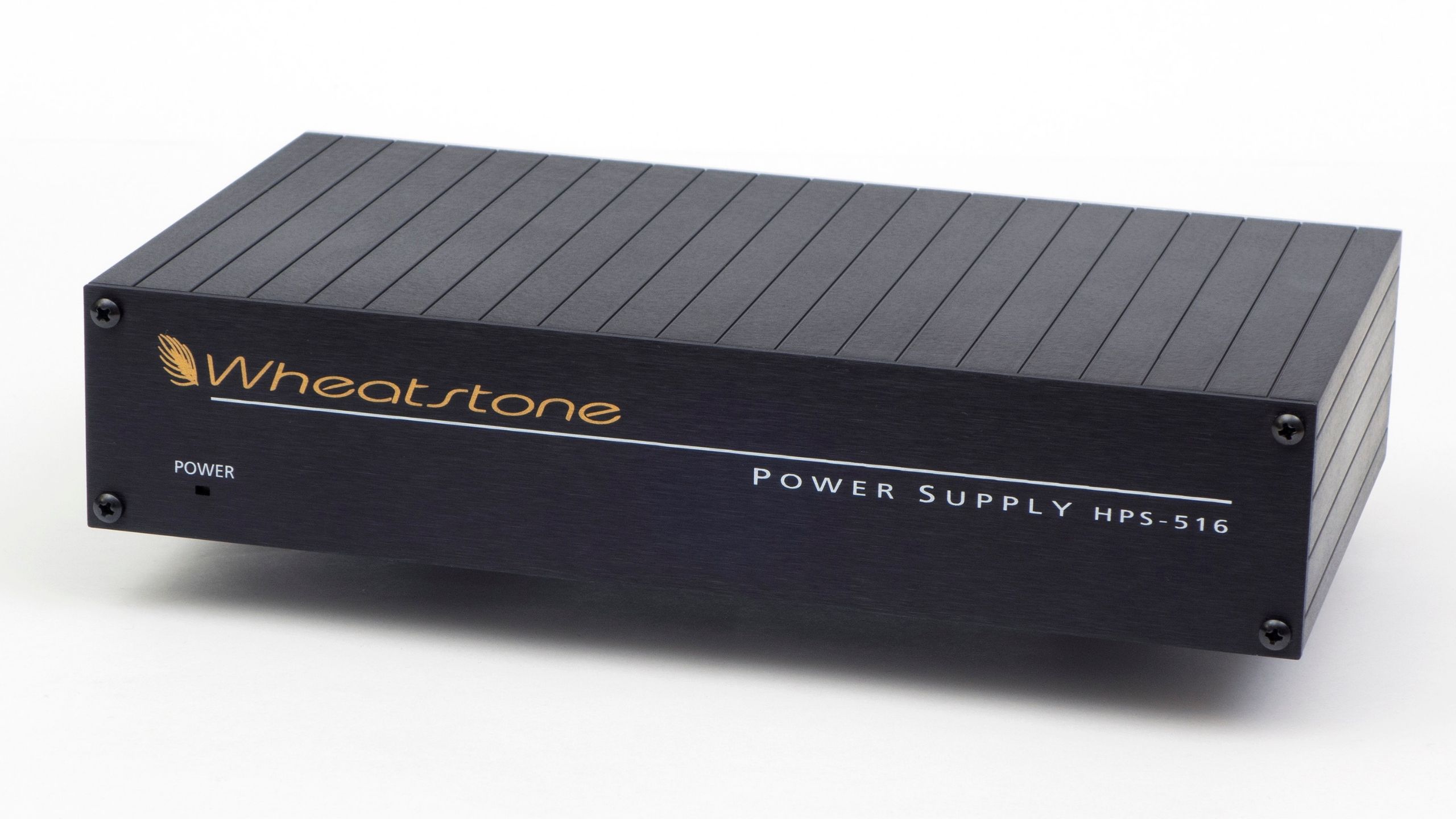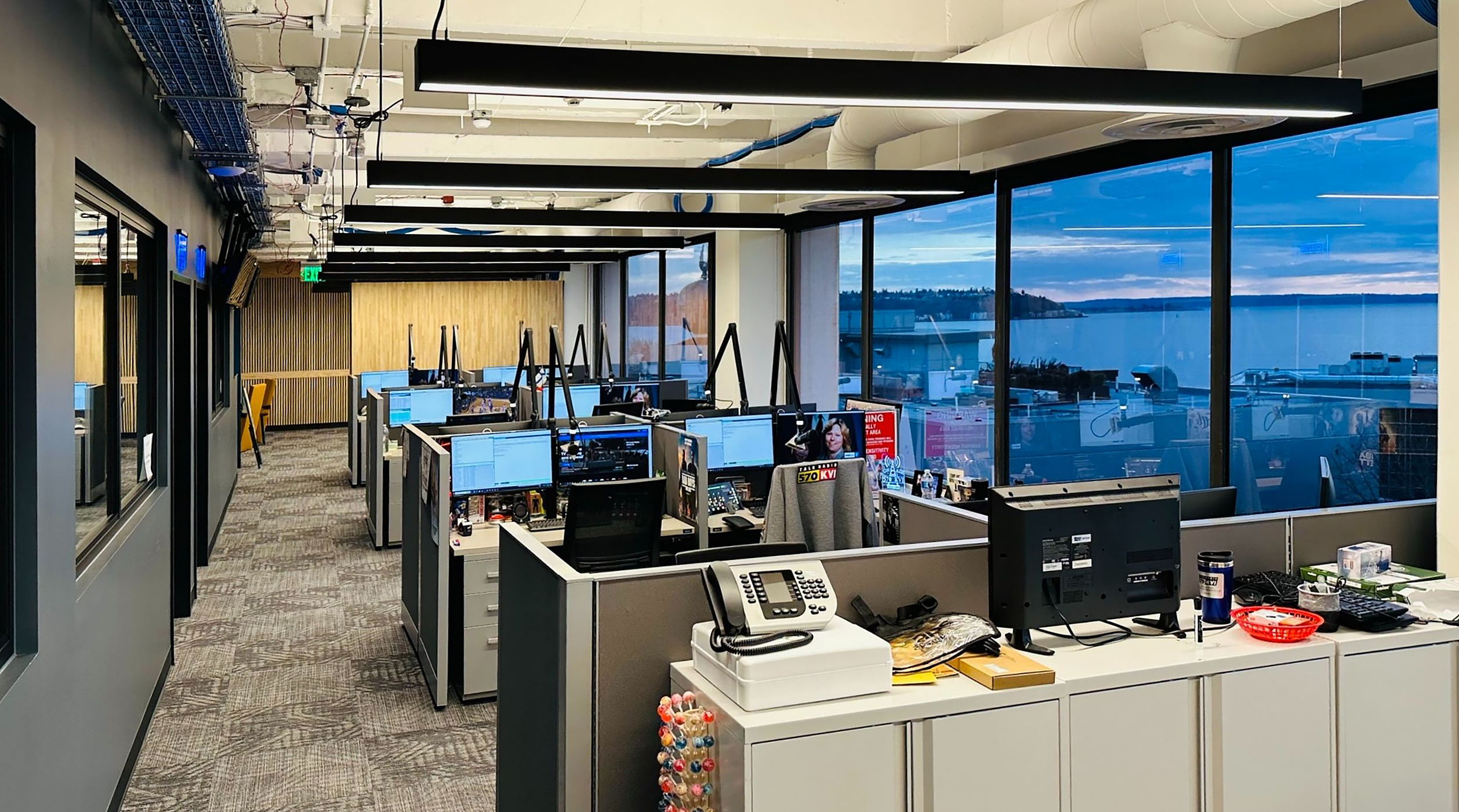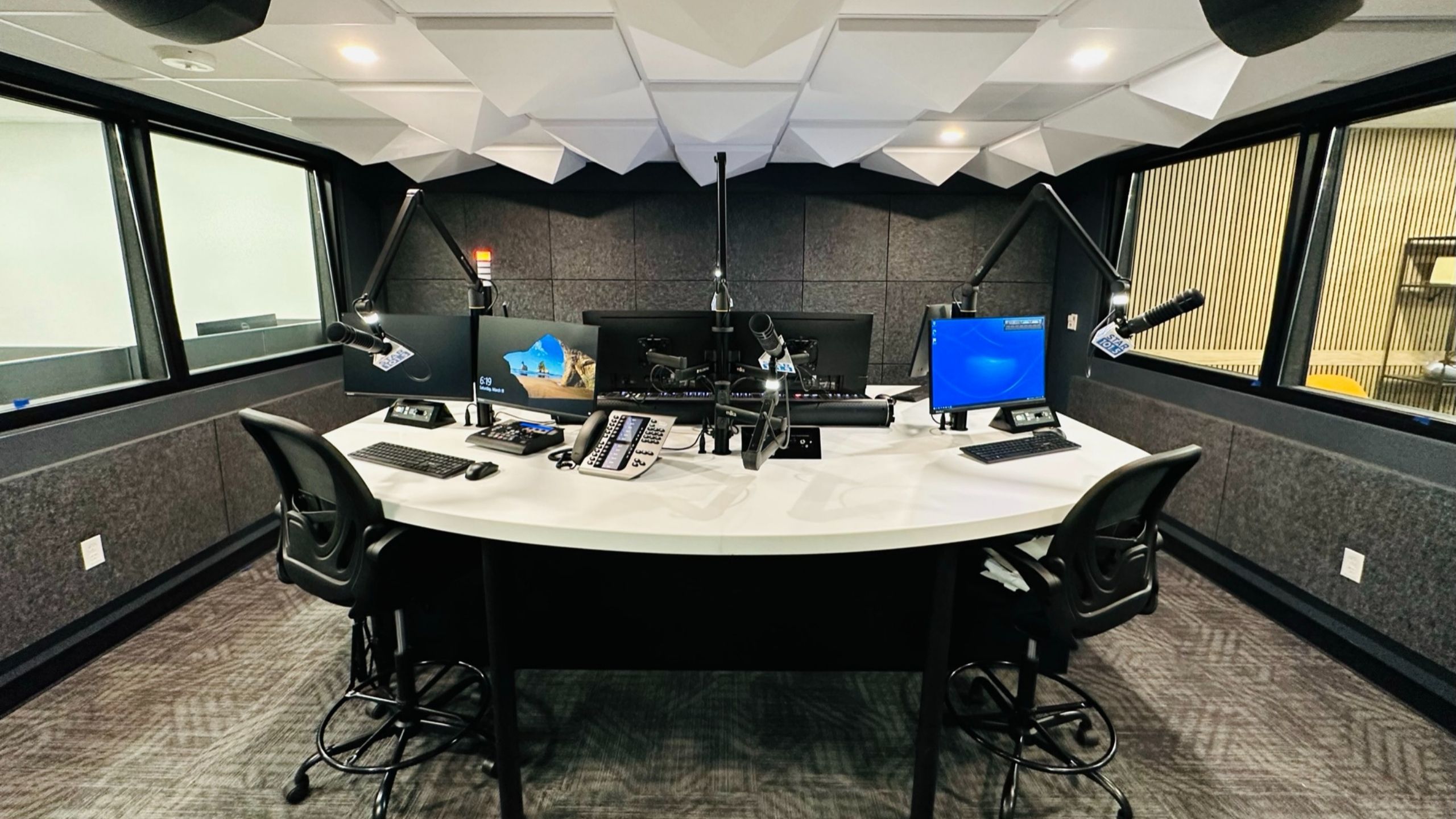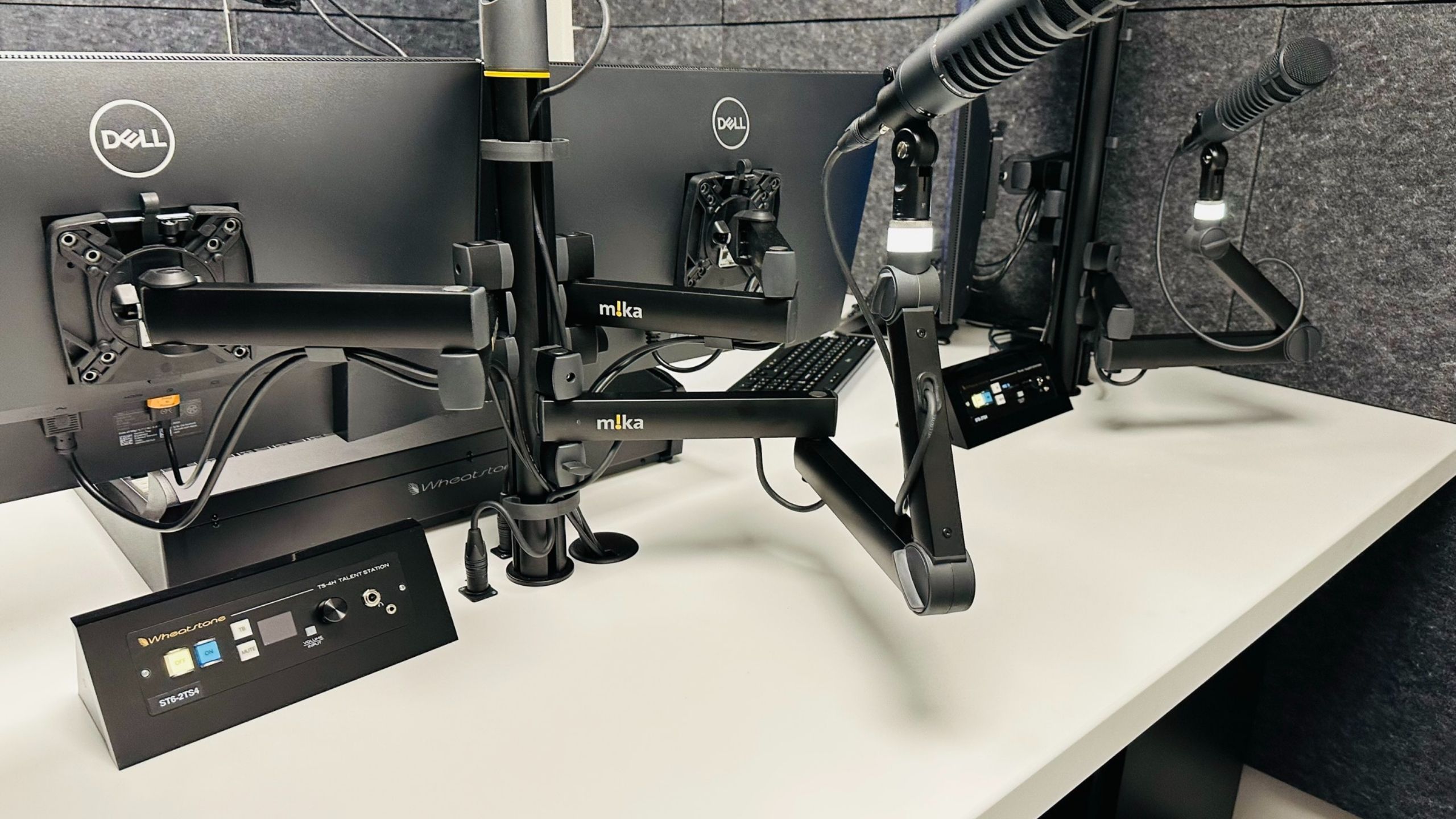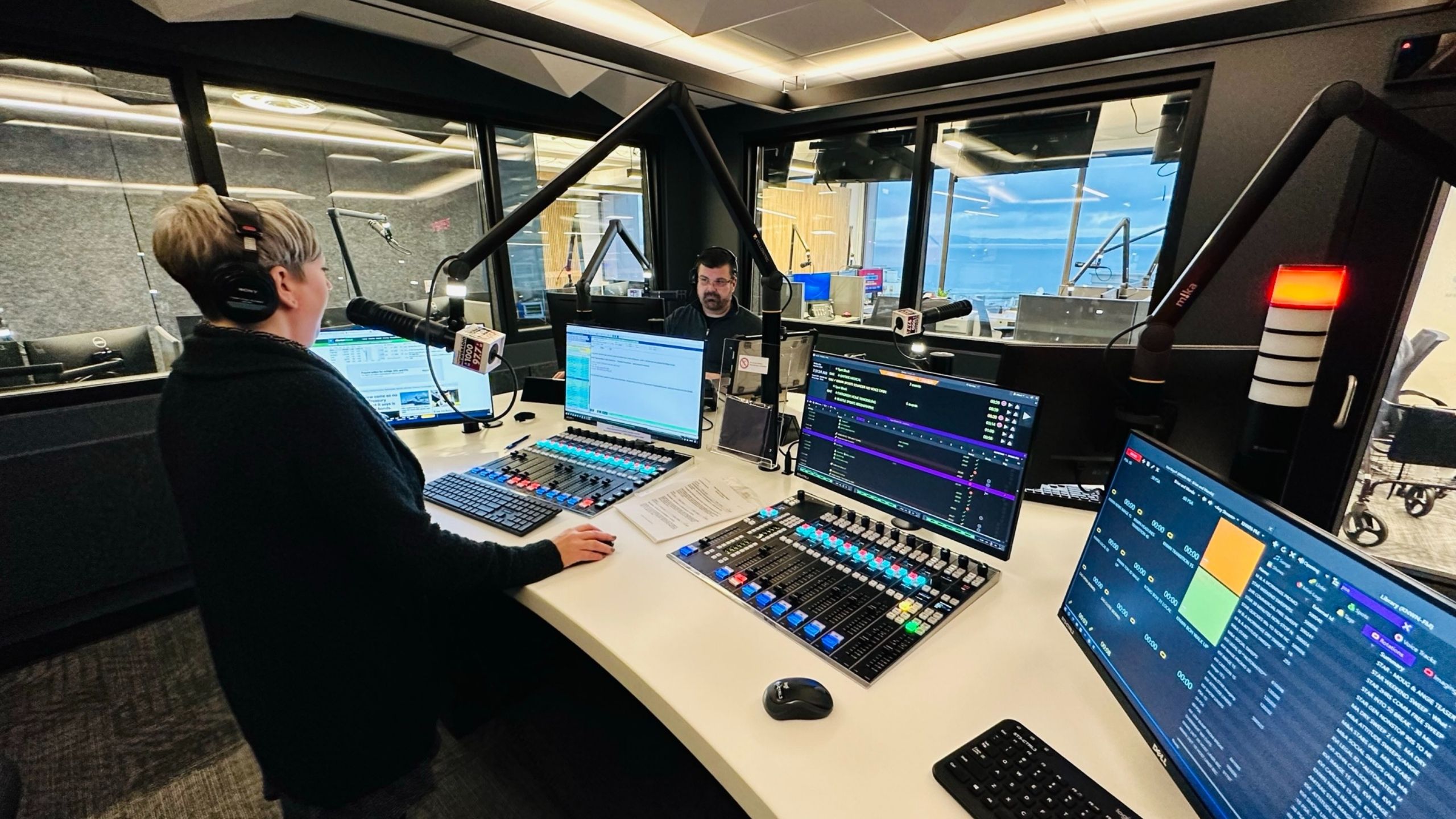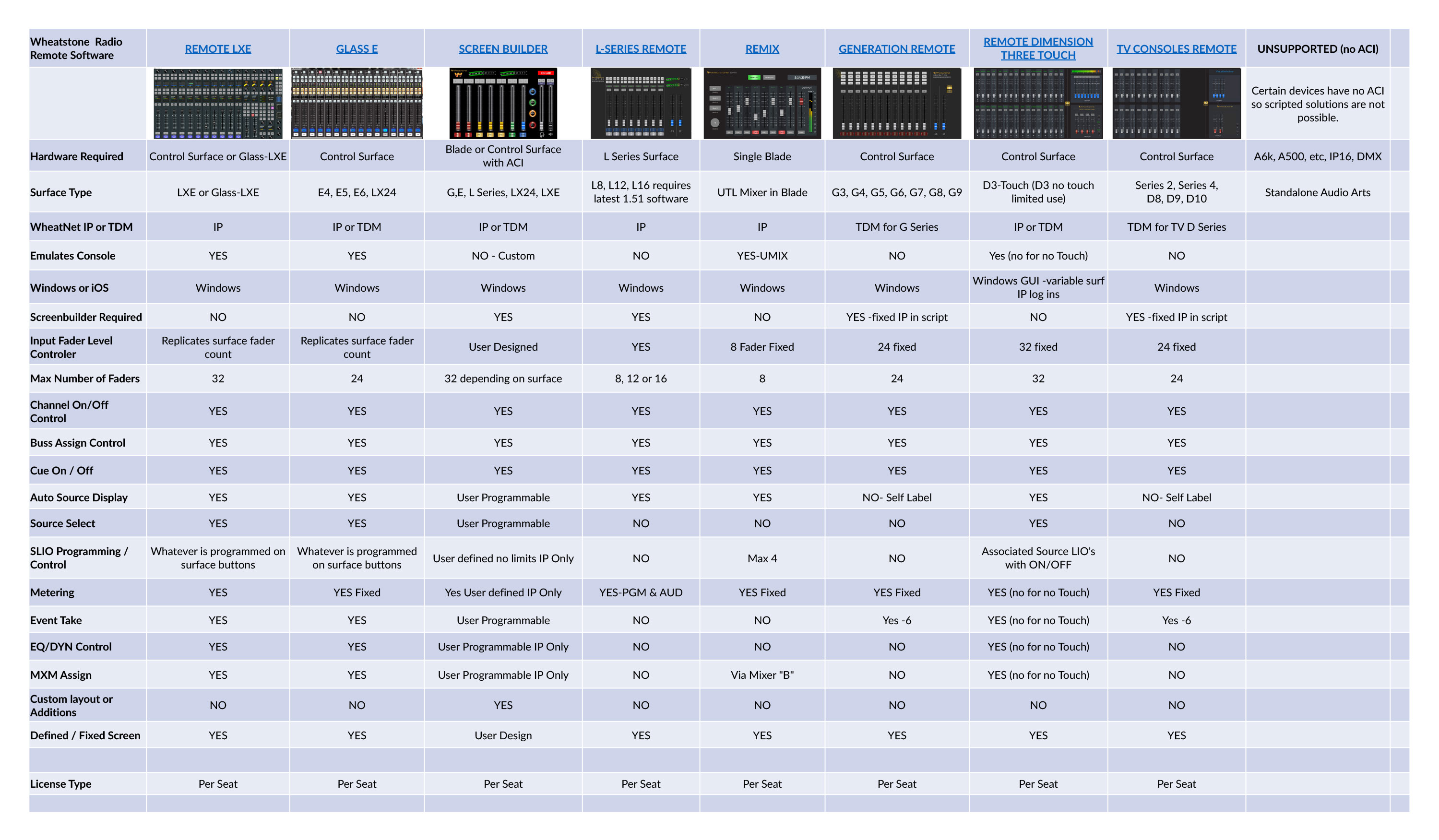
WHEAT:NEWS August 2023 Volume 14, Number 8
Radio Needs More of This
What radio really needs today is more advertisers and we know just the place to find them. Here, in this brief interview between our Dee McVicker and Triton Digital’s Jean-Luc Wasmer, we talk about streaming and advertising. We explain programmatic ad exchanges, why we added the Triton protocol to our streaming products, and what it all means to Wheatstone customers who want to increase on-air and streaming ad revenue.
DM: Many of our customers know Triton Digital as a CDN company that makes a really good streaming protocol, which is why we now include it in Wheatstone streaming appliances and software. What they might not know is how that streaming protocol plays a part in getting more ad revenue. Can you explain?
JLW: Right! First, let me start by saying that, yes, we are a CDN. But more important, Triton Digital is also a programmatic ad exchange known as the “Triton Audio Marketplace,” where broadcasters can offer ad inventory to advertisers. So, when companies like Starbucks, Geico and Ikea buy web display ads, they can buy radio as well within the same environment. And the MRV2 (Media Relay version 2) protocol you implemented in your streaming software is critical because ads transacted on our exchange (along with publisher direct-sold ads) can be precisely inserted into streams. We created MRV2 to be able to transition between ad insertions and programming cleanly and very precisely, down to the millisecond.
DM: How does the Triton Audio Marketplace work?
JLW: As an exchange or SSP (Supply-Side Platform), we integrate with almost 40 DSPs (Demand-Side Platforms) like Google DV360, TheTradeDesk and Xandr, where buyers working for digital advertisers go to buy and run their campaigns. It’s almost like the stock exchange, only for ads. Traders work on behalf of the advertiser to get so many qualified impressions. It’s an auction system and what Triton does is give broadcasters like Beasley, Bell Media, iHeart and other Wheatstone customers the tools to be able to offer available inventory on these digital ad platforms; our exchange lets broadcasters make their inventory available to anyone interested in buying. We specialize in audio only. There are “omnichannel” platforms that do video, audio, and display ads but only a very few like us that specialize in audio. Our marketplace offers access to more than 100 billion audio impressions per month, and we’re growing fast. We just announced our acquisition of Manadge, which will allow us to provide rich audience intelligence for programmatic and direct sell advertising campaigns.
DM: Up until now, we’ve been talking about mainly streaming inventory, but do I understand correctly that Jelli is now part of Triton and this adds an OTA piece to your marketplace ad exchange?
JLW: Correct. Jelli was owned by the same company as Triton (iHeartMedia) and we merged together last year, which accelerated the integration of the Jelli system to our programmatic exchange. As you know, originally Jelli was a system where people could vote for songs online. Eventually, they created this ecosystem where people could go to their website and buy ads that would run on stations that used the Jelli system. It turned into an advertising platform rather than a strictly content platform, but it was a closed system. You had to go onto their portal to buy ads. Now, with that underlying technology from Jelli as part of the Triton Audio Marketplace, advertisers can buy on-air ad inventory from broadcasters. This brings the broadcast inventory, not just the streaming ad inventory, to those digital platforms that advertisers use. The first over-the-air programmatic ads were heard on KLAC in Los Angeles in March.
DM: Wait, are you saying that we can now sell on-air ad inventory on digital exchange platforms like Google?
JLW: Yes, a small change is required by our DSP partners to support OTA but 95% of the integration is unchanged so we expect fast adoption. This could make all the difference for radio because as of now, radio is missing out on advertisers. We’re seeing more and more that the people who work in advertising don’t buy radio because they can’t access it easily on the digital platforms they’re now using. They are more interested in getting exposure for advertising campaigns across a number of media and that old way of buying radio on these old legacy systems is too inconvenient. Advertisers are looking to buy on-air and streaming inventory and this is a great way for them to do that.
By the way, smaller station groups that don’t necessarily have a large digital advertising department can now take advantage of large brokerage agencies to represent them on the exchange. Katz, DAX and TargetSpot, for example, can act like brokers and buy inventory from broadcasters and when they sell it, they make a commission. We now build that type of transaction into our platform so these agencies can represent stations as an extended sales team for them.
DM: So what you’re telling me is that our streaming customers can offer advertising time on your open exchange and be able to accept ads via the MRV2 protocol, which we now include in our Streamblade/Wheatstream appliances and Layers Stream software?
JLW: Yes. We created the MRV2 protocol because we needed a precisely timed, clean transition between ads and content, and the protocol that was widely in use at the time (and still is) wasn’t cutting it. We need to be able to detect to the millisecond where the break for the ad starts so the transition is very clean without any overlap. In other words, [we developed it] to make sure the ad insertion isn’t botched. It guarantees that everything is timed perfectly so the sound quality of ad insertion is great. The protocol is part of the foundation of everything else, and it’s good that we’re able to include that as standard in Wheatstone audio streaming products.
DM: Thanks for taking the time to explain this, Jean-Luc. We’ll see you at IBC in September!
Jean-Luc Wasmer is the VP, Partnership Integration & Architecture, for Triton Digital. Wheatstone sales engineers will be at IBC, stand 8.C91, and will be available to answer any questions on MRV2 and Wheatstone streaming software and appliances for provisioning and processing streams.
NAVIGATING CLOUD: ON-PREM SERVER APPROACH
Should you move your studio operation to AWS or another cloud provider? Even if you’re not thinking about it just yet, management certainly is. One very good option is to contain Layers Stream software locally on your server or stack of servers now and, if or when the time comes, move this and other functions offsite to a cloud provider.
One server running Layers Stream at your facility can host the provisioning, audio processing and metadata support for most, if not all, of your streams out to a CDN provider.
Eventually, that same server or stack of servers can also serve instances of FM audio processing with MPX out to your transmitters and/or serve mixing instances for all your LXE consoles throughout your facility, saving the cost and space for each mixing engine that would otherwise sit in racks. Not having a mix engine in every single studio or a rackful of them drawing electricity or heating up the room reduces the cost of cooling and electrical and it might even free up some room for another work area, like a voiceover booth.
Adding Layers software suite to an existing server in your facility checks off that cloud box with all the benefits management wants, but doesn’t require you to hand over the keys to a third party. For background information on containerization, cloud, and servers, read How Future Cloud Is Changing Studio Buildouts Now or watch Servers as the Gateway to Cloud, presented by our head of R&D Dominic Giambo.
POWER SUPPLY FOR AUDIOARTS CONSOLES
WE NOW ROLL OUR OWN
And they don’t get much better than this new power supply made right here at our factory in New Bern, NC.
We know, we’ve tested them all.
Off-the-shelf power supplies just don’t cut it for Wheatstone products, and Audioarts consoles either. We made this new power supply for our Audioarts IP-12, DMX, Air 1 and Air 4 consoles as well as Wheatstone TS-4 and TS-22 talent stations. (We also make our own power supplies for LXE audio consoles and our WheatNet IP audio network line of products.)
We roll our own power supplies so our products can start with clean power, which, as we all know, is the first rule of great audio performance and component longevity. Everything down the line depends on steady, clean power free from spikes and voltage drops, which is why we designed and build this new supply in-house at the Wheatstone factory.
We manufacture all our products under one roof in New Bern, NC, handling everything from machining, fabrication, and screening to printed circuit board surface-mount. Raw materials arrive in the back door and wind through the factory to be pressed, molded, wired and tested, retested, and tested again before making their way out into the world as Wheatstone products.
Manufacturing in house lets us respond more quickly to changes and gives us much better control over a volatile supply chain.
It also lets us start with clean power that makes all the difference down the line.
WHAT’S MISSING FROM THIS STUDIO?
A broadcast integrator, an equipment dealer, and a manufacturer walk into a studio…
This would make a great opening line for a bar joke, except it’s no joke. What’s missing here, like so many broadcast studios these days, is the CE.
KNWN 97.7 FM/1000 AM, KLPZ 101.5 FM and KVI 570 AM moved into a new studio facility earlier this year following their acquisition by Lotus Communications from Sinclair Broadcast Group. Absent throughout the design, the planning, the buildout, and the implementation of Lotus’ new Seattle studios on 1st Avenue was an onsite CE, due in large part to a broadcast engineering shortage.
“There’s so much that falls under the CE role and it’s hard to find that today. Those older guys are either gone or retired and the CEs that remain are so competent that their time becomes valuable,” said Lotus DOE Jason Houts, who oversaw the studio project from Lotus corporate in Los Angeles until he was able to hire a contract engineer to fill the CE role.
 Without a CE onsite, he leaned heavily on AoIP intelligent networking by Wheatstone, project management by SCMS, system integration by RadioDNA, and the occasional flight to Seattle from Los Angeles.
Without a CE onsite, he leaned heavily on AoIP intelligent networking by Wheatstone, project management by SCMS, system integration by RadioDNA, and the occasional flight to Seattle from Los Angeles.
“Integration is my new favorite word,” commented Houts.
He makes the point that there is no substitute for a competent CE, which is why most Lotus facilities in ten major markets - including Seattle - are maintained by local CEs or contractors. “I’ve got firefighters who can fix anything and deal with just about anything, and there’s so much more to deal with in all of our locations with towers and IT. A new facility on top of that just isn’t an efficient use of their time,” he said. When it comes to a once-in-a-blue-moon event like a new studio, he added, technology partners like Wheatstone, SCMS and RadioDNA are more efficient and bring valuable expertise because they do it every day. “A good example of this was our news studio. We had never done a news station before Seattle, but Rob at RadioDNA had all that experience with news stations like WTOP, which really opened up what we were able to do for KNWN (previously KOMO AM/FM). We could never get that on our own,” said Houts, who not only used the same integrator as the top billing news station in the country but also the same studio network and work surfaces (RadioDNA and WheatNet-IP respectively, of course).
In addition to fast-tracking workflows by positioning news edit stations in line with the news desk, Rob Goldberg and his team at RadioDNA created AoIP salvos and macro sequences for triggering and automating newsgathering from the NewsBoss automation system, which is integrated into the native AoIP environment through the WheatNet IP control interface (ACI) (as is the Zetta automation system). They also custom developed touchscreens for quick news editing and used a combination of Blade utility mixers, I/O and WheatNet IP scripting to automate IFBs as well as route, control and mix down live feeds from multiple sources.
That kind of deep understanding of technology, space and workflows shaved off time and cost, and was especially important given the critical timing of the studio move, said Houts. Lotus had 18 months to move three FMs and one AM from the original KOMO TV building as part of its deal with Sinclair, most of which was burned up in red tape for a pending property lease that eventually fell through. Once they found a suitable space and started building new studios in earnest, they were up against a hard cutover. In less than six months, they had to frame out, network together, and bring four on-air control rooms, two production rooms, a voicetrack studio and a news desk with three editor positions live.
Doug Tharp at SCMS managed equipment needs, delivery details and deadlines as the project changed location and scope. “They pretty much tossed us the keys to the new space and we figured out the rest, from what would work for the talent to equipment details and meeting target deadlines,” said Tharp. The one constant was WheatNet IP audio equipment, which had been purchased beforehand by Sinclair and had been sitting in a warehouse pending the Lotus acquisition. Included with the acquisition were I/O Blades and LXE and IP-12 console surfaces, talent stations, mic processors and an assortment of AoIP elements; a full studio system that could be put together in a myriad of different configurations.
It all came together at the beginning of the year, in a 9,500 square-foot facility on the fourth floor of an office suite with sales occupying the east side facing the Seattle Space Needle and studios for three FMs and one AM occupying the west side facing out over Puget Sound. All studios plus a decked-out retreat area for the talent overlook the sound in a shared architectural experience.
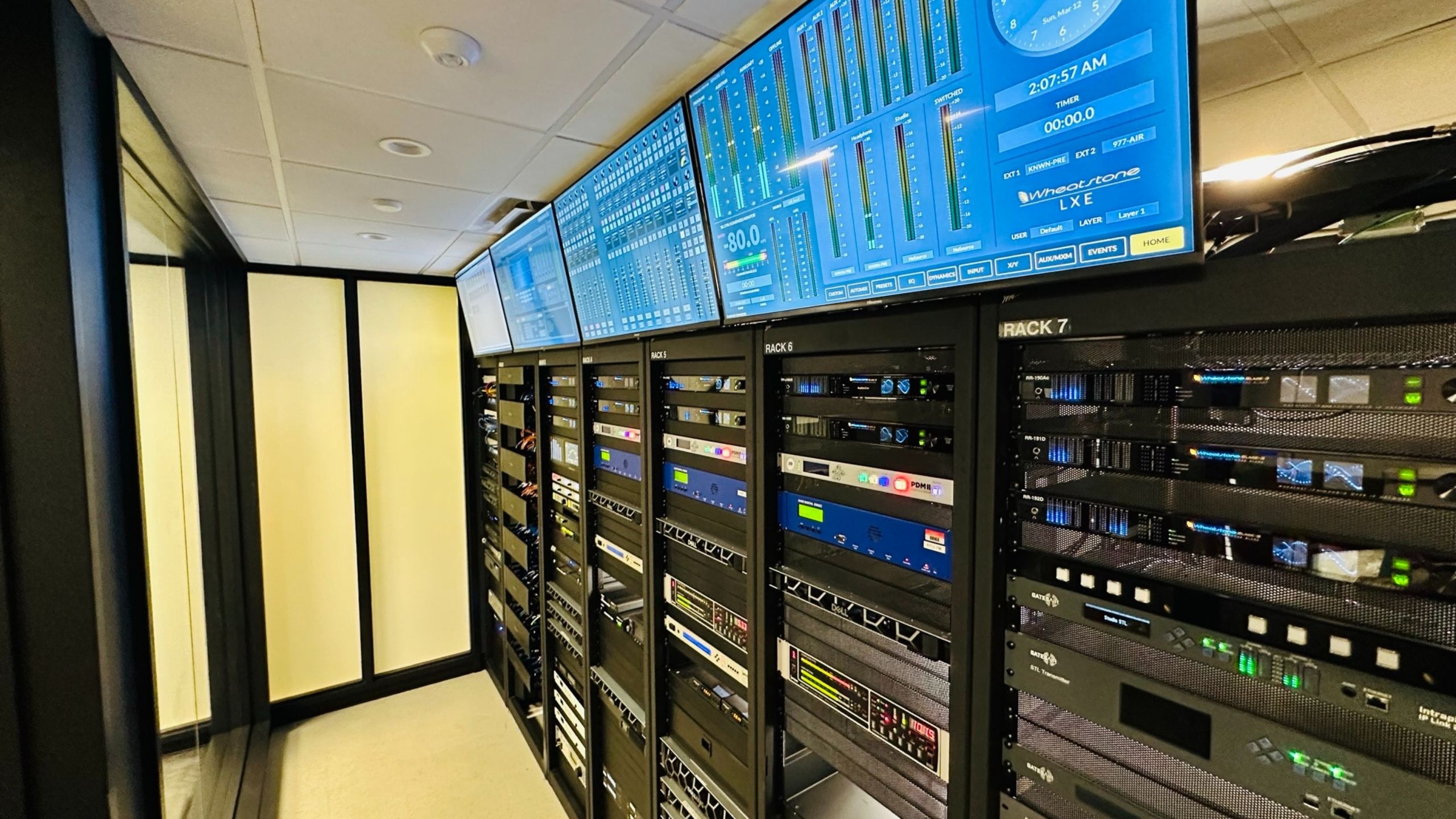 The TOC just beyond the sales office is the first point of entry for visitors and is built out in a grand display of radio technology.
The TOC just beyond the sales office is the first point of entry for visitors and is built out in a grand display of radio technology.
Every single bit of this is first class. It’s the best and most advanced studios we have in the company,” said Houts, who continues to work with Wheatstone, SCMS and RadioDNA to refine the system – in many cases via remote interface to the WheatNet IP audio network. Being able to remote into the AoIP network for regular maintenance and occasional troubleshooting is one of the benefits of the new facility, which also lessens the impact of the engineering shortage on Lotus.
“The engineering shortage is making us think smarter these days,” said Houts.
Lotus is one of the oldest privately owned groups and currently owns and operates 48 radio stations in 10 major markets in the U.S., several of which are also WheatNet IP audio networked and operated studios.
WE’RE GEARING UP FOR IBC!
This IBC show, experience for yourself what a WheatNet IP audio networked facility can do.
Team Wheat will be at stand 8.C91 to demonstrate what’s new on the surface, including our new LXE console with VoxPro editing built in, and what’s new under the AoIP hood—including how to spin up a streaming instance in AWS, “touch the cloud” through our LXE console surface, and how scripting, virtualization and intelligent AoIP can work together for your next studio. Our studio experts can help you put together a complete studio—engineered, manufactured and supported by the industry's leading AoIP provider with thousands of studios in operation around the globe.
Also, be sure to check out our new Audioarts Voice1 to bring out that larger-than-life broadcast voice and our mighty Lion FM audio processor to get the best sound possible out of today’s highly compressed source material.
Head over to Wheatstone stand 8.C91 or tune into our social media channels to experience what’s new at IBC.
The Wheatstone online store is now open! You can purchase demo units, spare cards, subassemblies, modules and other discontinued or out-of-production components for Wheatstone, Audioarts, and VoxPro products online, or call Wheatstone customer support at 252-638-7000 or contact the Wheatstone technical support team online as usual.
The store is another convenience at wheatstone.com, where you can access product manuals, white papers and tutorials as well as technical and discussion forums such as our AoIP Scripters Forum.
Compare All of Wheatstone's Remote Solutions
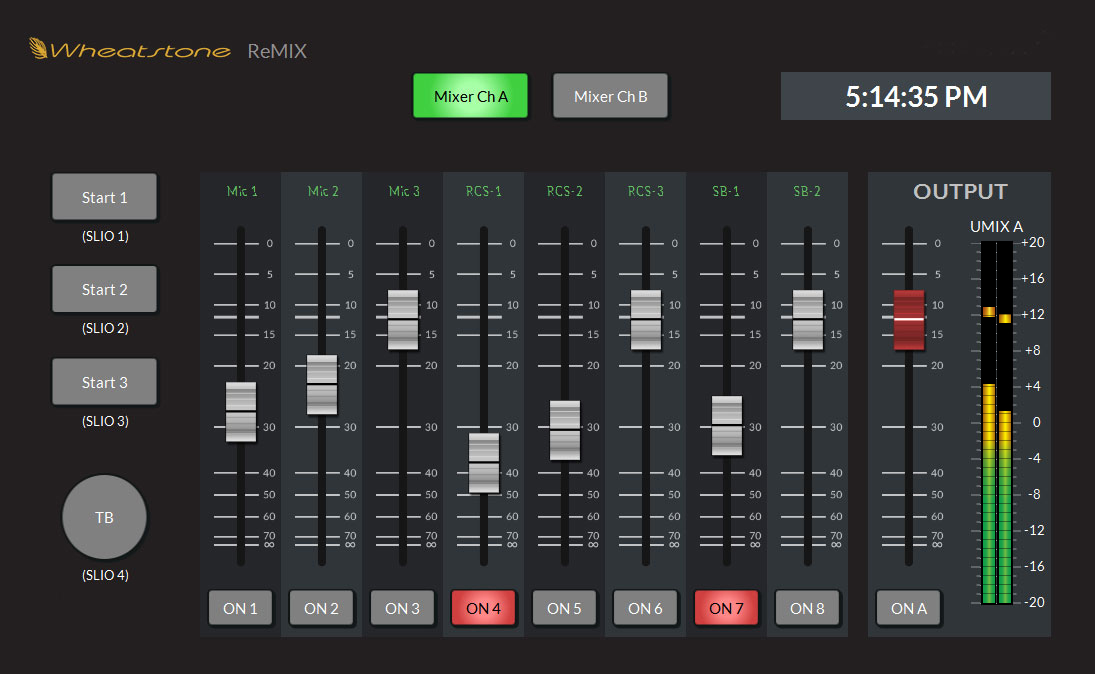 We've got remote solutions for virtually every networkable console we've built in the last 20 years or so. For basic volume, on/off, bus assign, logic, it's as easy as running an app either locally with a good VPN, or back at the studio, using a remote-access app such as Teambuilder to run.
We've got remote solutions for virtually every networkable console we've built in the last 20 years or so. For basic volume, on/off, bus assign, logic, it's as easy as running an app either locally with a good VPN, or back at the studio, using a remote-access app such as Teambuilder to run.
Remote Solutions Video Demonstrations
Jay Tyler recently completed a series of videos demonstrating the various solutions Wheatstone offers for remote broadcasting.
Check out the chart below, and/or click here to learn more on our Remote Solutions web page.
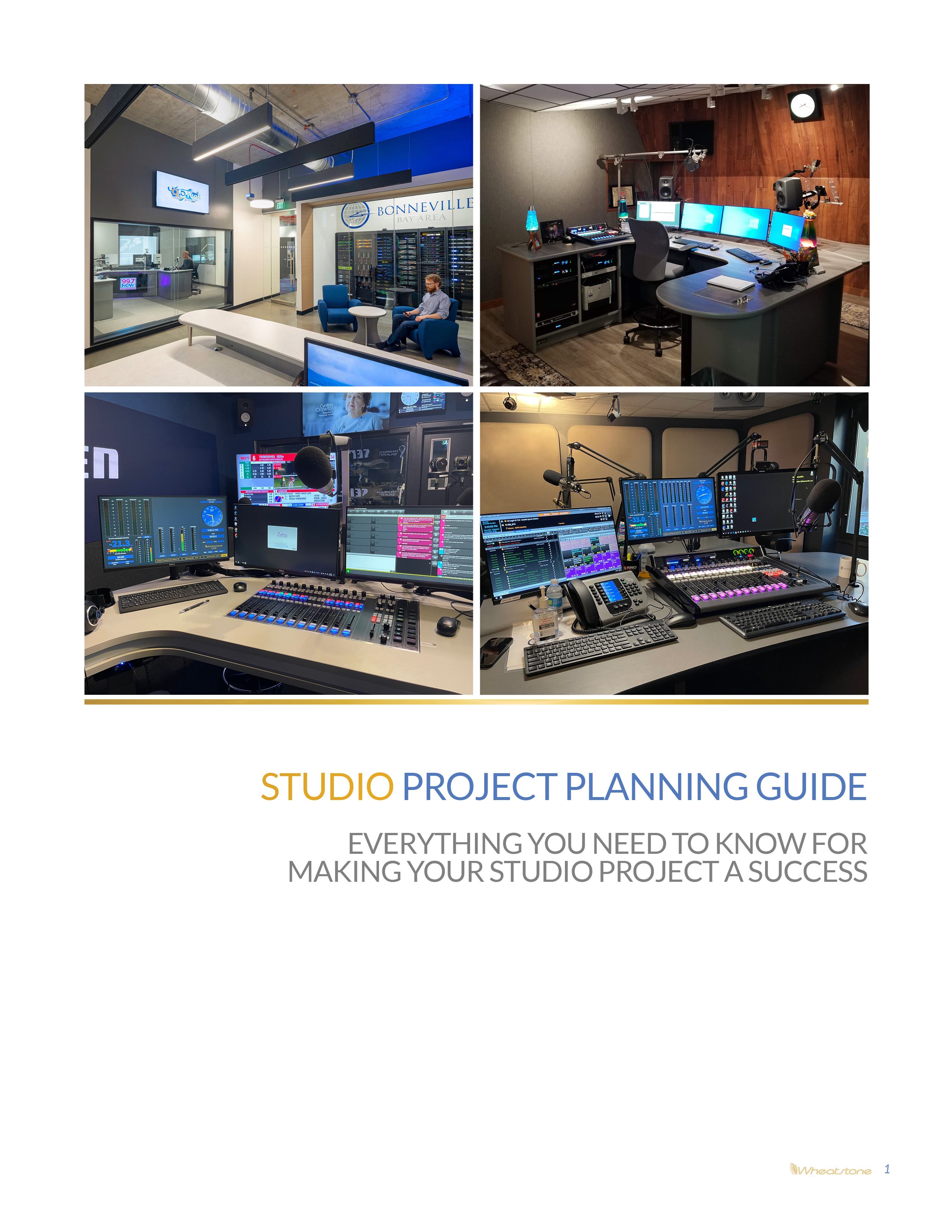 Studio Project Planning Guide
Studio Project Planning Guide
EVERYTHING YOU NEED TO KNOW FOR MAKING YOUR STUDIO PROJECT A SUCCESS
Have you seen the latest smart studio trends? Discover expert tips, surprising uses for AoIP Blades, 6 common studio gotchas, and how to be aware of little expenses. A must-read before you begin your studio project.
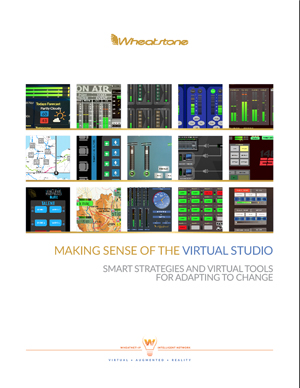 Making Sense of the Virtual Studio
Making Sense of the Virtual Studio
SMART STRATEGIES AND VIRTUAL TOOLS FOR ADAPTING TO CHANGE
Curious about how the modern studio has evolved in an IP world? Virtualization of the studio is WAY more than tossing a control surface on a touch screen. With today's tools, you can virtualize control over almost ANYTHING you want to do with your audio network. This free e-book illustrates what real-world engineers and radio studios are doing. Pretty amazing stuff.
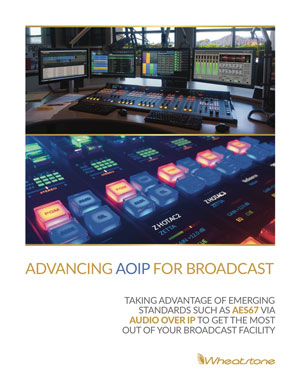 Advancing AOIP for Broadcast
Advancing AOIP for Broadcast
TAKING ADVANTAGE OF EMERGING STANDARDS SUCH AS AES67 VIA AUDIO OVER IP TO GET THE MOST OUT OF YOUR BROADCAST FACILITY
Putting together a new studio? Updating an existing studio? This collection of articles, white papers, and brand new material can help you get the most out of your venture. Best of all, it's FREE to download!
IP Audio for TV Production and Beyond
WHAT YOU NEED TO KNOW ABOUT MANAGING MORE CHANNELS, MORE MIXES, AND MORE REMOTE VENUES
For this FREE e-book download, we've put together this e-book with fresh info and some of the articles that we've authored for our website, white papers, and news that dives into some of the cool stuff you can do with a modern AoIP network like Wheatstone's WheatNet-IP.
Got feedback or questions? Click my name below to send us an e-mail. You can also use the links at the top or bottom of the page to follow us on popular social networking sites and the tabs will take you to our most often visited pages.



